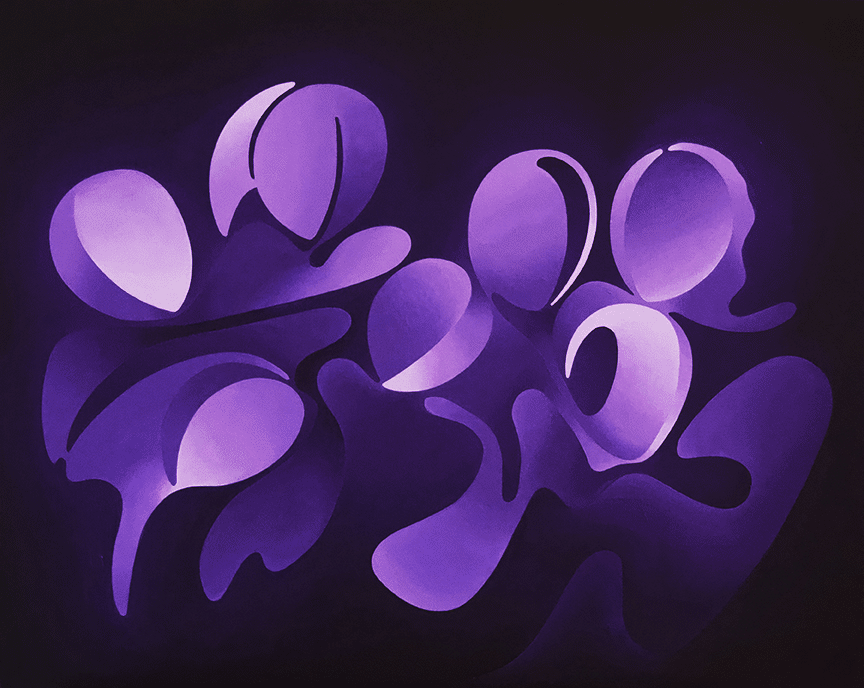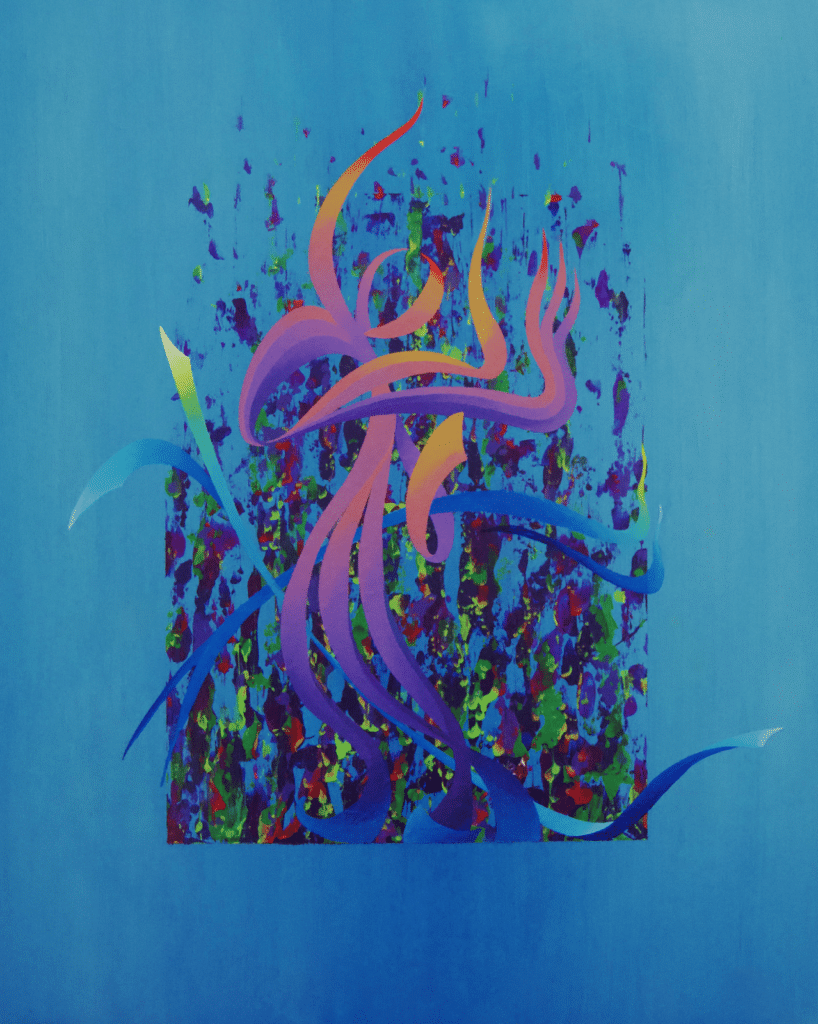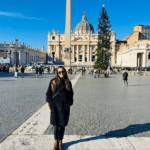David Robatin, a Richmond-based artist known for his emotive, abstracted figurative work, has spent nearly a decade developing his distinctive style known as “Emotionalism.” His unique approach combines elements from the color field movement, abstract expressionism, and chiaroscuro, channeling deep personal experiences into vivid, expressive pieces that invite viewers to connect through shared emotions. Robatin’s journey to this point is a testament to resilience and transformation, with his art capturing moments of recovery, vulnerability, and growth, allowing audiences to find their reflections in his work.
Robatin’s path as an artist is closely intertwined with his journey through addiction recovery, a critical period that redefined his relationship with art. Fifteen years ago, after a pivotal experience in a local hospital and supportive recovery community, Robatin emerged with a renewed sense of purpose and hope, and he gradually reconnected with his artistic practice. Initially, the emotions he worked through in sobriety were challenging to express verbally, but painting offered a liberating outlet for this inner world. He has since created a body of work that translates raw feelings into figures and shapes layered with colors, inviting viewers to summon their experiences and memories.

Photo Courtesy: David Erin Robatin
The unexpected thread that reminds us we’re connected
Each piece Robatin creates begins with a sketch—often capturing a spontaneous feeling or memory—that later evolves through layers of vibrant color. His chosen medium, acrylic, facilitates the gradual transitions from light to dark that imbue his figures with movement and depth, adding dimension to every piece. Robatin’s art demands active engagement from the viewer, asking them to interpret each piece through their lens, emotions, and memories. This dynamic interaction, in which the audience completes the narrative, is essential to his work, embodying a “three-way dialogue” between the artist, artwork, and observer. The result is a connection that feels intensely personal and universally relatable, a testament to Robatin’s goal of healing through shared experience.
Having studied studio art and communications at Denison University, Robatin brings a structured understanding of art’s communicative power to his practice. He draws on this background to guide his audience toward self-reflection, allowing his compositions to elicit individual interpretations. This artistic intention has resonated with audiences in Virginia and beyond, as Robatin’s works have appeared in exhibitions across Richmond and increasingly at regional galleries throughout the United States. Collectors and viewers frequently describe his work as a fresh, unexpected exploration of the human form—a compliment that Robatin sees as a mark of his ongoing commitment to challenging and expanding traditional notions of figurative painting.

Photo Courtesy: David Erin Robatin
Who lingers in your thoughts and visits your dreams?
Robatin’s distinctive approach is evident in the response his work receives at shows, where viewers often find themselves compelled to share their own stories and experiences in reaction to his paintings. Each piece feels substantial, regardless of its physical dimensions, carrying weight through its layered colors, gestural curves, and evocative forms. By blending these elements, Robatin draws viewers in, encouraging them to explore their emotions as they interact with his work. This process is cathartic for the artist and the audience, creating a shared space where emotions are acknowledged and validated.
Beyond technique, what sets Robatin’s work apart is the honesty and vulnerability that underpin each painting. Through Emotionalism, he has built a platform where themes of hope, doubt, love, and resilience come together. His use of color to represent complex feelings allows him to communicate what words often cannot, helping viewers navigate their experiences. For Robatin, this is a necessary part of emotional and mental healing—bringing those inner thoughts and feelings to light, where they can be processed and understood. In his own words, painting allows him to confront “desire, passion, dissent, and grace” in a freeing and transformative way.
Robatin’s art fosters connection at a time when many struggle to express themselves or find the courage to confront difficult emotions. The intentionality with which he creates each piece invites viewers to do the same—to allow his art to mirror their introspections. His pieces, influenced by years of personal reflection and recovery, are accessible yet profound, appealing to viewers who seek meaning beyond surface aesthetics. In this way, Robatin’s art not only decorates a space but transforms it into a forum for self-discovery for everyone.

Photo Courtesy: David Erin Robatin
As Robatin’s presence in the art world expands, his work remains grounded in its mission to connect and communicate. His ability to render complex emotions through abstracted figures creates a powerful experience that defies conventional interpretation, offering something new with each encounter. Through this evolving dialogue, Robatin invites audiences to explore their depths, making each interaction with his work as unique as the individuals who engage with it.
For more information about David Robatin’s work and upcoming exhibitions or to connect with the artist, visit his website or follow him on Facebook and Instagram.
Published by: Josh Tatunay









